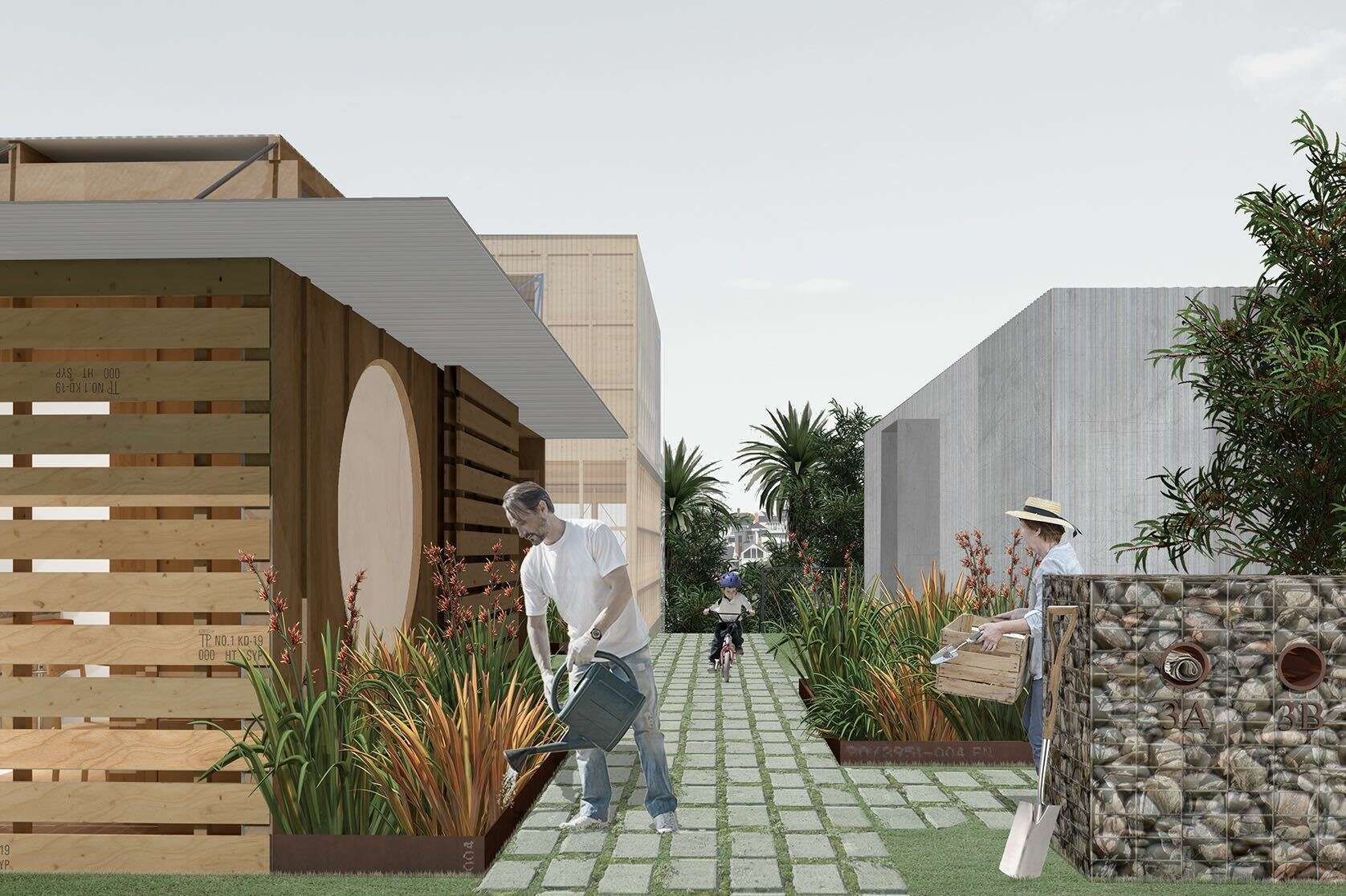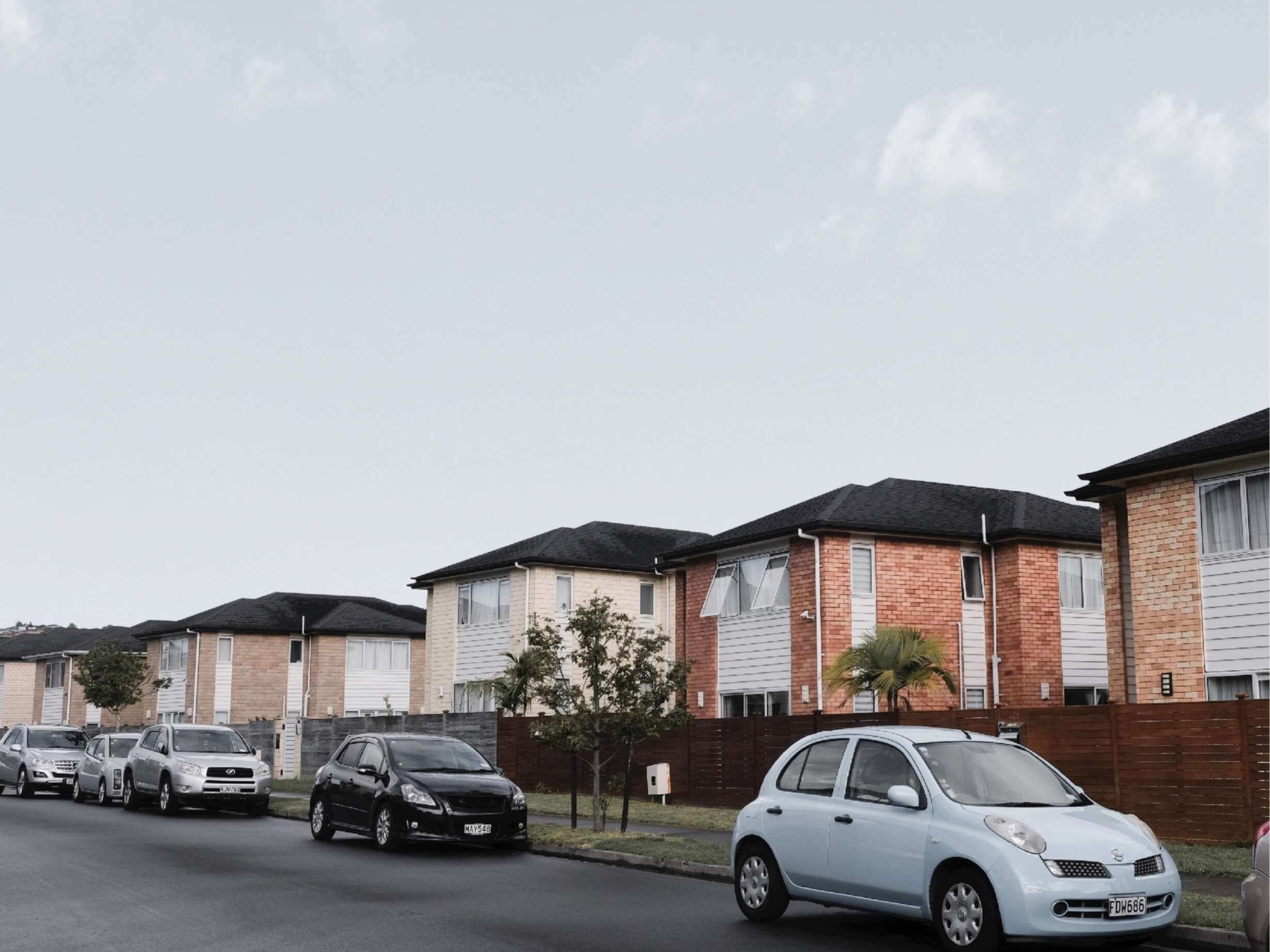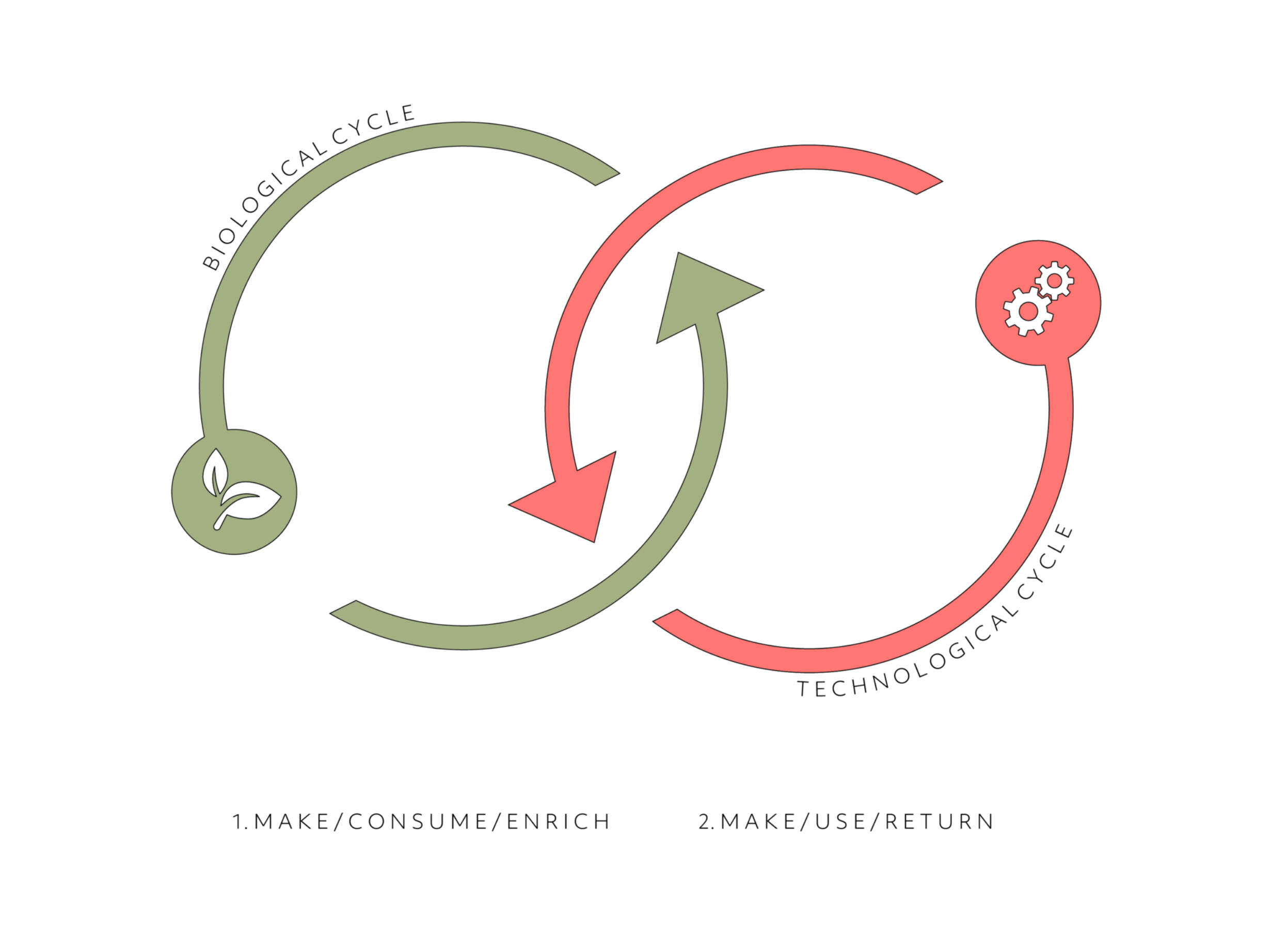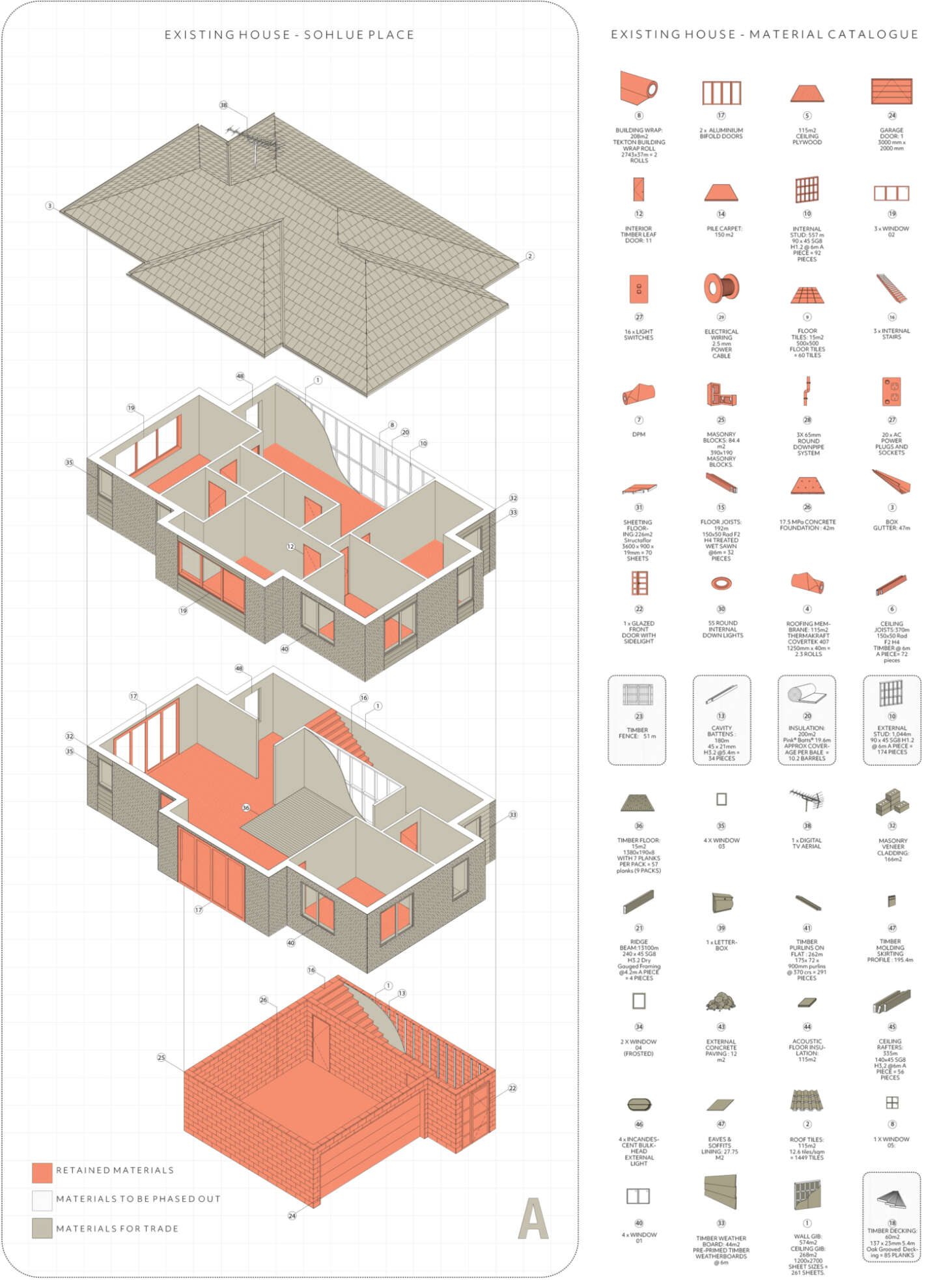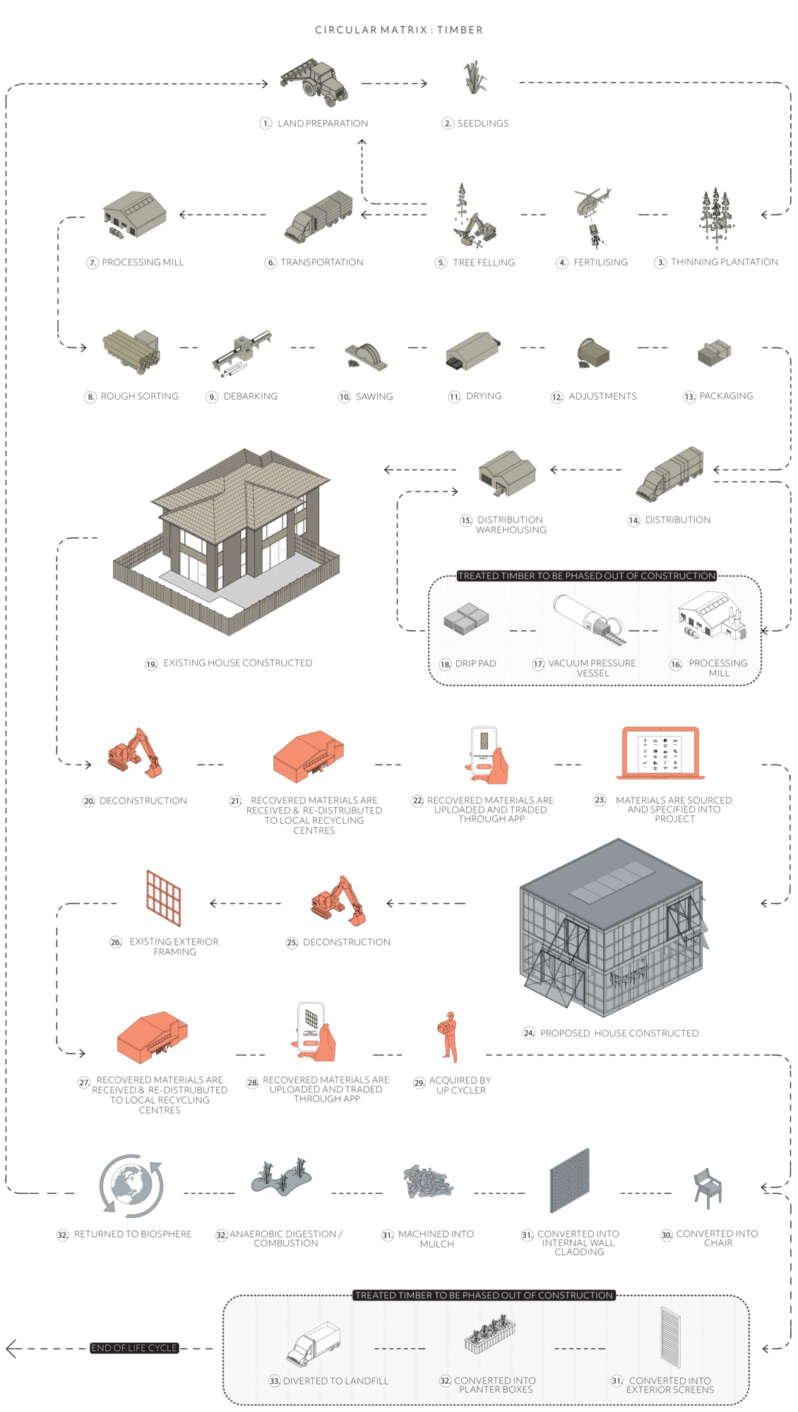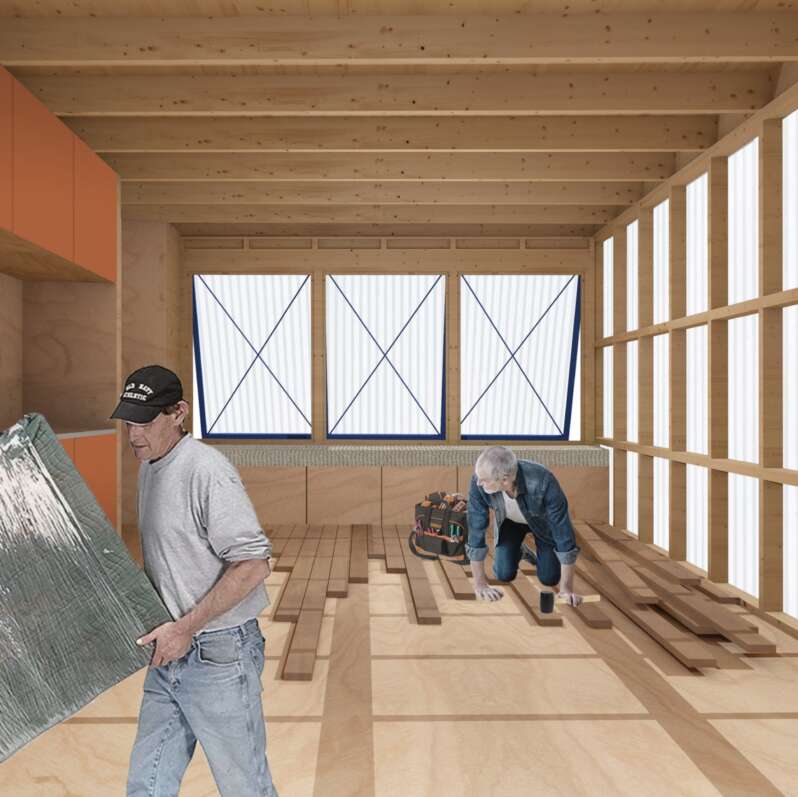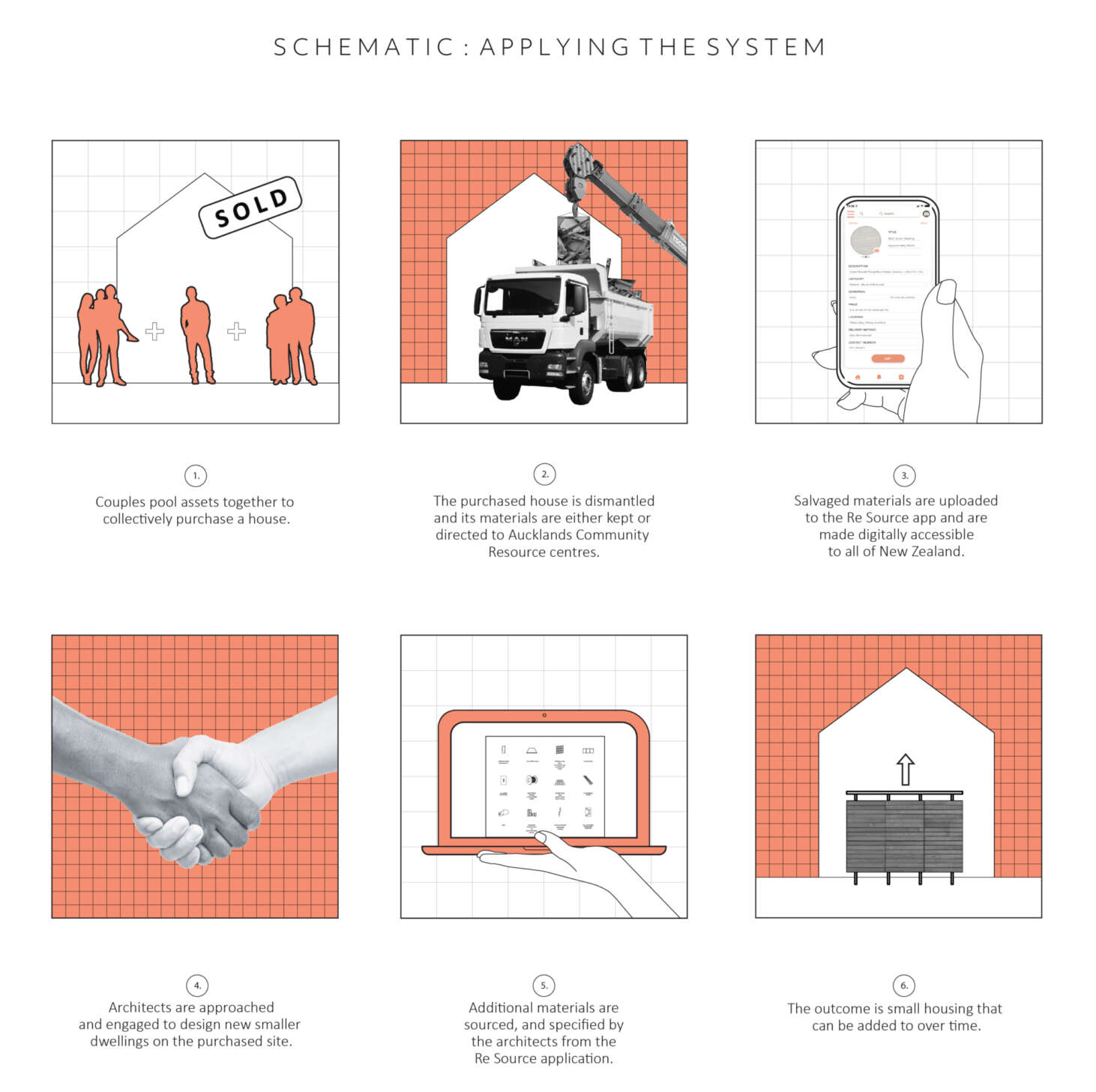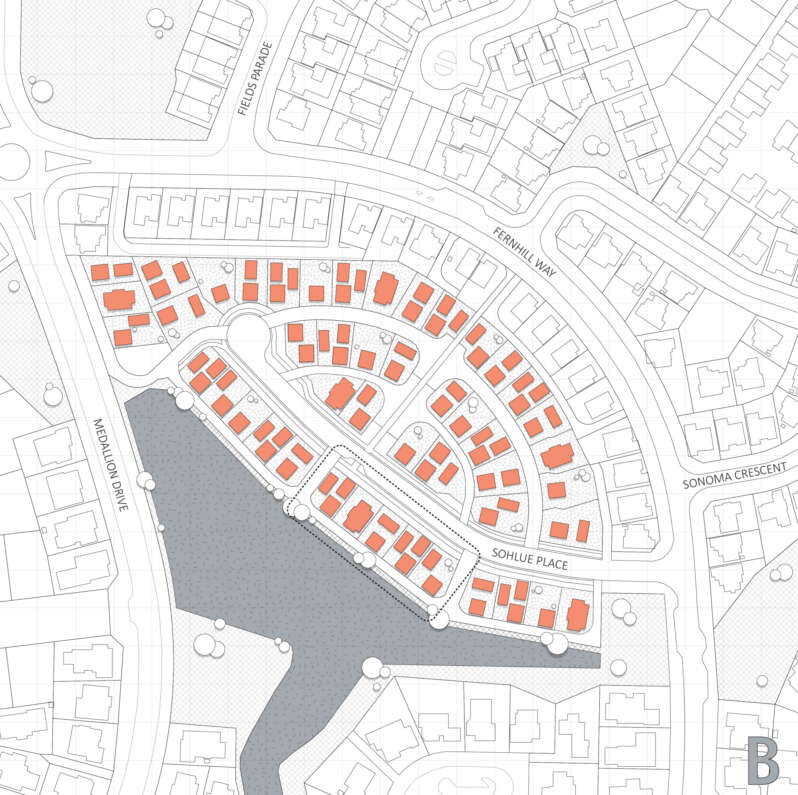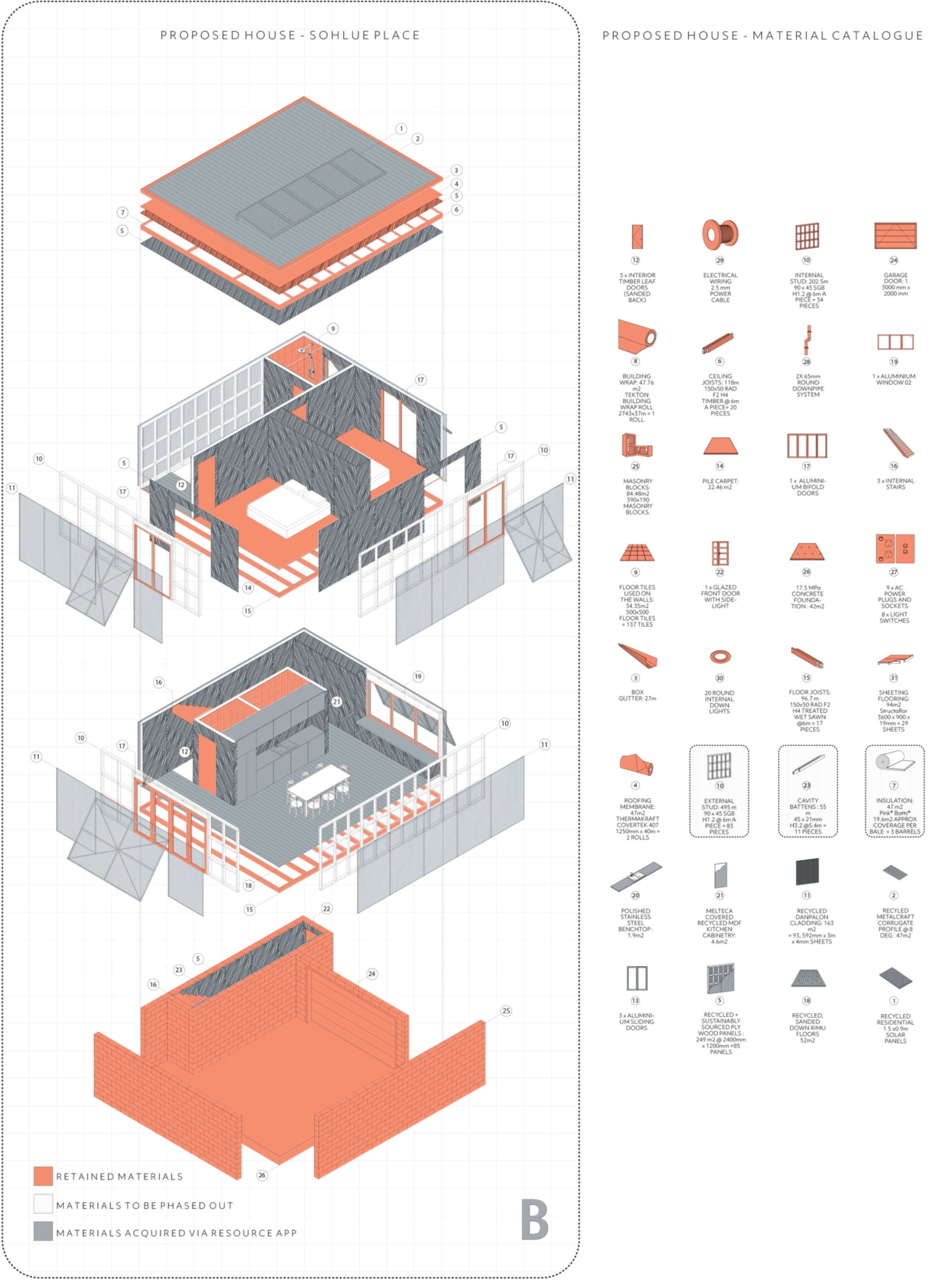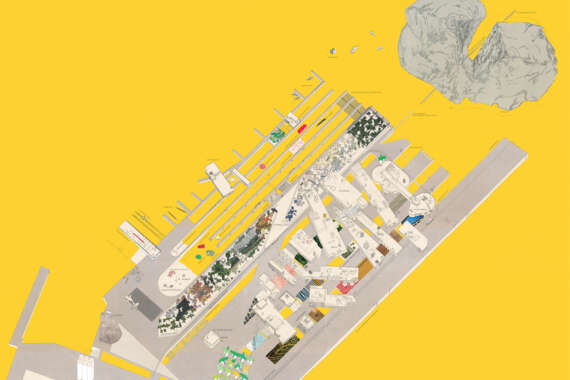The implications of the ReSource application were tested back at the scale of a typical suburban site to demonstrate how architects can use reclaimed materials in the retrofit of existing suburbs into more densified living conditions. As a result, this thesis proposes a conceptual housing schematic for applying a gentle, incremental densification framework across several adjoining suburban sites. This densification framework intends to start on a typical Auckland site before becoming a catalyst for expansion across the block and finally, a model to replicate across other established suburban locations.
The housing schematic proposes the deconstruction and reconfiguration of a single stand-alone house on a 300 square meter site at Sohlue Place. The existing dwelling will be re-configured into three smaller stand-alone houses on the same site. It is proposed that the construction of these new houses will use materials from the existing stand-alone house, together with reclaimed materials sourced locally through the ReSource app. The design increases the number of dwellings on the neighbourhood block from 5 to up to 15. While small in footprint, increased density is achieved, which does not compromise liveability. The design adopts a ‘build less, give more’ mentality that endeavours to maximise opportunities for collective benefits through a density that fosters community.
As incrementality is achieved across the block, perimeter fences will be removed, and houses will become linked by neighbourhood commons spanning multiple backyards, providing for the establishment of quality, shared, open spaces for gardening, recreation and play. The intimate scale of the houses will enable privacy, but the absence of high fences encourages the possibility for spontaneous social interaction and community involvement, a condition currently lacking in our suburban environment.
The ReSource application demonstrates that by using reclaimed materials sourced through the app, new living conditions can be achieved within the parameters of social and environmentally sustainable construction practices. Cost savings achieved through the use of reclaimed, but not inferior construction materials, evoke a sense of empowerment by enabling whole different sections of society to define their own living standards. A collective societal involvement will be the impetus towards a more sustainable mode of living.
